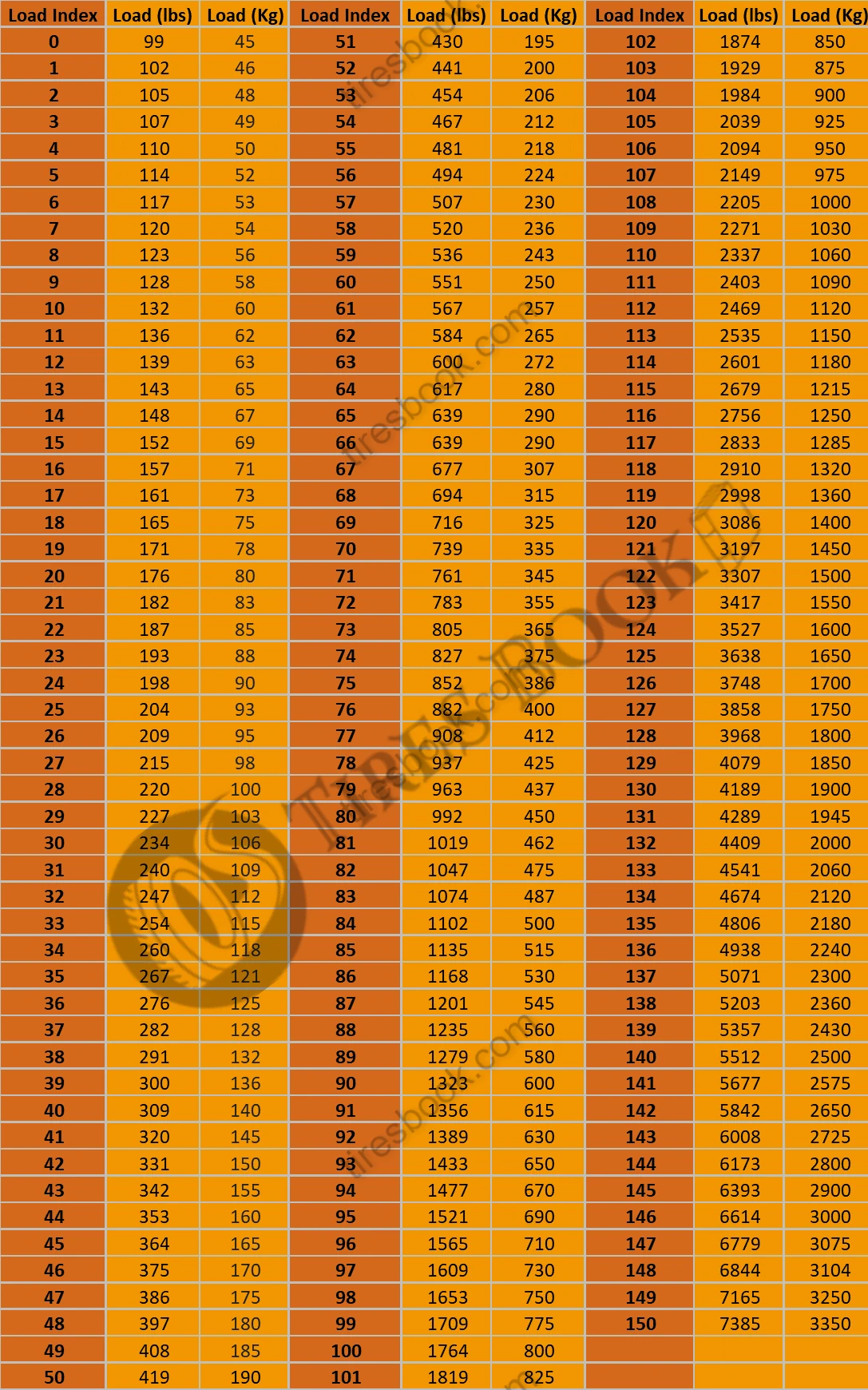What Is Load Index In Tires?
The load index in tires is an assigned numerical value indicating a tire’s maximum load-carrying capacity. It helps compare the load-carrying capacities of different-sized tires. The higher the tire’s load index number, the greater its load-carrying capacity. For example, a tire with a load index of 87 can carry approximately 1,201 pounds.
Why Is Tire Load Index Important?
The tire load index is crucial because it tells the drivers how much weight they should put on the vehicle. Overloading tires can cause premature wear, damage, and the risk of a blowout. It’s vital to use tires with a load index equal to or greater than the original tires factory-installed on the vehicle.
Tire Load Index Chart
The tire load index chart provides the load-carrying capacities of tires based on their index numbers. For example, a tire with a load index of 92 can carry 1,389 pounds. Load indexes for passenger cars and light trucks usually range from 70 to 126. Below is a complete load index chart that covers a range from 0 to 150:

Where Can I Find My Tire Load Index?
The tire load index is typically found on the tire’s sidewall, listed after the tire size information. It is represented by a numerical code that follows the tire’s size designation and indicates the maximum weight a single tire can support safely when properly inflated.
For example, you might see something like “P215/65R15 95H” on your tire.
- “P” stands for passenger vehicle tire.
- “215” is the width of the tire in millimeters.
- “65” is the aspect ratio, which is the height of the tire sidewall as a percentage of the tire’s width.
- “R” indicates a radial construction.
- “15” is the diameter of the wheel in inches that the tire is designed to fit.
- “95” is the tire’s load index, indicating the maximum load the tire can carry at maximum inflation.
- “H” is the speed rating, showing the maximum speed at which the tire can safely operate.
In this example, the number “95” is the load index. Each load index number corresponds to a specific load capacity listed in a tire load index chart. For instance, a load index of 95 indicates that the tire can safely carry up to 1,521 pounds (690 kg) under maximum inflation.
Additionally, your car’s manufacturer often states the recommended load index for your tires on a placard on the door jamb on the driver’s side, or on a sticker located on the rear left passenger side door jamb.
Is It Better To Have A Higher Load Index?
Yes, it is generally better to have a higher load index for your tires. A higher load index rating means that your tires will be able to handle a heavier load. This is particularly important if you frequently haul or tow materials, goods, boats, trailers, etc. Choosing a tire with a lower load index than the original equipment specifications can result in the tire not being able to carry the load capacity of the original.
Load Index vs Load Range: The Difference
The load index is a more recent and precise method to describe a tire’s carrying capacity. It explicitly indicates the maximum load a tire can carry at its maximum inflation pressure, represented numerically on the tire’s sidewall. The higher the load index value, the greater the tire’s weight-bearing capacity.
On the other hand, load range refers to the thickness and strength of a tire’s sidewall. It affects the tire’s weight capacity and pressure handling. Load range is indicated by letters (such as C, D, E, SL, XL, etc.) that represent the ply rating or the number of layers in the tire’s construction.
Historically, load range was based on ply rating, with more plies indicating a higher load range and better load-bearing capacity. However, modern tires use stronger materials for fewer plies. Thus, the load range now defines the tire’s toughness and maximum allowable air pressure, rather than the actual number of plies used.
A load range letter, like “C,” might be accompanied by a number indicating the maximum air pressure the tire can take. For example, “C1” might indicate a max air pressure of 50 PSI, while “C2” would be 35 PSI. This pattern holds for other load ranges as well.
